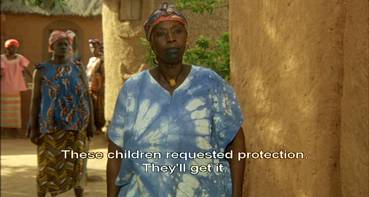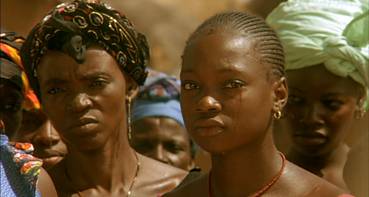|
It's
funny the thoughts that sometimes occur to you. I remember not so
long ago, for instance, listening to some twaddle about
how the right to hunt and kill animals for fun has
been an essential part of countryside life for centuries
and thinking that the very worst reason for doing anything
is tradition. Think about it for a moment – you can do something because it helps alleviate poverty or improves living standards
or even contributes to the good of society at
large, but to do something solely because someone did it
last year and the year before seems a little ridiculous.
It is the action of sheep, of the fabled concept of lemmings. But when that so-called
tradition involves the suffering of either man or beast,
then 'ridiculous' is no longer a strong enough word, and an altogether
more appropriate adjective is called for.
There
is always an inherent danger judging another culture by the rules or standards of your own, but there are some practices
that few enlightened people anywhere would regard as anything but
barbaric. High up on that list must be the practice of female circumcision,
a procedure that involves the surgical removal of the female
clitoris and labia at a young age, one that in a disturbing number of cases results in the death of the patient.
This is not that surprising when you consider that the procedure
is performed under often unhygienic conditions with anything
from razor blades to slivers of glass. Its practice, once
quite widespread, is now largely restricted to specific regions of
Africa, and although it is often associated with the Muslim
faith, it is actually a cultural practice that has no religious
barriers. Although religious arguments have been put forward
in its defence, they hold little water, even with many of
those of similar faith. Stripped down to its basics, the
reasons are grimly familiar: the clitoris has only one function,
to provide pleasure for a woman during the sexual act, and
in strictly patriarchal, dogma-led societies, this very idea
is seen as somehow wicked and thus something to be stopped.
But strip away the cultural and religious trappings and
the answer is much more basic – by removing any chance of
a woman enjoying sex, even the most brutal and unpleasant
of men can take a wife and be reasonably certain that she
will not be tempted to sleep with someone else. Effectively,
it functions as a particularly nasty and very permanent
chastity belt. It's not about religion or tradition or culture,
it's about control and subjugation.

In
the realms of African cinema, Ousmane Sembene is a legendary
figure. The first African director to achieve international
success (in 1966 with La Noire de…/Black
Girl), he now has 13 features to his name, and having
reached the ripe age of 81 he shows no sign of mellowing out. Indeed, Moolaadé has all the hallmarks
of a work made by a politically driven angry young man, but is executed
with the skilled restraint of a film-maker of considerable
experience.
Although
the film evolved in part from Sembene's own dismay at the
practice of female genital mutilation, or 'purification'
as it is dressed up here, the act itself is initially a
background detail, a catalyst for a story of defiance, determination
and non-conformity of strong women refusing to accept the
male imposed status quo, of the traditional in conflict
with the modern, of the erosion of cultural identity by
the march of globalisation. Yes, the film really is that
multi-layered, but it never shouts its messages, allowing
them instead to emerge from a deceptively simple story of
a woman who takes a stand and refuses to be bullied into
submission by her peers.
Some
plot. In an unnamed African village, six girls who are facing
'purification' flee the ceremony. Four of them ask protection of Collé Gallo Ardo Sy, a mother who, after losing two daughters to botched circumcisions some years
earlier,
refused to allow her only surviving daughter to undergo
the procedure. She invokes 'moolaadé', which is akin to what we know as asylum, but based in folklore and believed to have
real consequences for anyone who dares to break it. She
marks her doorway with a rope that becomes as effective
a barrier as a steel portcullis on a castle, which the protected
girls and the 'salindana' – female elders who carry out
the purification ceremonies – fear to cross. Mind you,
the sight of a determined Collé and her imposing co-wife
Kawako bearing large machetes may also have some influence
here. Matters are complicated by the
impending wedding of Collee's daughter Amsatou to Doucouré,
the son of wealthy and influential
village ruler Dougoutigui. Doucouré is soon to return from France,
but Collé's stand angers the elders, who begin openly
voicing the belief that no-one would ever marry a 'bilakoro',
a girl who has not been cut.
For
the village men folk, Collé's non-cooperation becomes
a symbol of female disobedience, and in their hasty search
for a reactive response they blame the
educational effect of radio, which they regard as a symbol of modernity and the
corrupting influence of the outside world. Unwilling to
break the moolaadé, they round up all of the radios
in the village and burn them. But the outside world is increasingly
encroaching on the village and its ways, symbolised most
starkly by the return of Doucouré, whose time spent
in Paris has changed his attitude to local customs and represents
both a way forward for his people and the corrupting influence
of more affluent countries. Unable and unwilling to touch Doucouré,
the villagers eventually round on amiable traveling dealer
and womaniser Mercenaire, another link with changing times
who is forced to make his own stand against the cruelty
of tradition, and pay the price for his beliefs.

The
stand-off between Collé and the traditionalists is
compellingly handled, in part because of Fatoumata Coulibaly's
determined performance as Collé, but also thanks
to Sembene's deft direction, aligning us completely with
Collé and her girls without ever hitting us over
the head with his reasoning. But just when it seems as if
Collé cannot fail, her husband Ciré returns
home and the film shifts to a more sobering gear, bringing
us swiftly down to earth and reminding us very bluntly of
where this society's balance of power lies. As Ciré
has brutal intercourse with Collé, the key underlying theme
moves to centre stage, with a distressing flashback to Collé's
own mutilation and a post coital bath that suggests that
sex, for Collé, has been rendered an act of sufferance.
Once again executed with admirable subtlety, its a sequence that nonetheless chilled me to the bone.
If
the final scenes smack of wish fulfillment, they also succeed
as a call to defiance, a suggestion that no law, no belief,
and no tradition is so deeply entrenched that it cannot
be challenged. In this respect, the film reaches far beyond
local issues to universal themes of injustice, protest and
change. The fight may be hard, but it is nonetheless worth
taking up if, as a world, we are to move forward in any
sort of unison.
Sembene
tells his story with compelling attention to small detail
and character, his complex but still unforced layering creating a powerful polemic in persuasively dramatic clothing.
It's a moving, involving and inspiring work that is also
deeply satisfying as character-led storytelling, and as
unflashy but assured a piece of film-making as you'll see
all year.
Framed
1.85:1 and anamorphically enhanced, the transfer displays
a very slight shimmering here and there
but for the most part looks gorgeous, showcasing Dominique Gentil's
rich cinematography handsomely. It really impresses in its
detail, colour and especially contrast range, with excellent
shadow detail and solid black levels, no mean feat given
the dark skin tones and bright, sun lit exteriors.
The
Dolby 2.0 stereo soundtrack boasts fine clarity and sometimes
effective separation. This is not a film that cries out
for a 5.1 track and the stereo track here does the job well.
The
subtitles sit a tad high in the picture area but are otherwise
very clear. It should be noted for anyone who saw the film
in the cinema that the British film print's somewhat unorthodox (and
distracting) use of capitals to emphasise key words – MOOLADÉ,
CUT, PURIFICATION, etc. – has not been reproduced here.
Interview
with Ousmane Sembene (25:20) is anamorphic widescreen
and conducted in French but subtitled very clearly in English.
The director talks about the process of setting the film
up with a multi-cultural crew, working with the actors,
his own approach to cinema, and his views on female genital
mutilation.
The Making-of Documentary (24:46) is considerably more
substantial than the standard EPK and provides an intriguing
look behind the scenes during the making of the film and
includes interviews with cast and crew members about both
the film and the subject matter. It benefits greatly from
being properly shot by a documentary team rather than being cobbled together from grabbed DV footage, as is too often the case (though
a few wobbly DV inserts do appear). All conversations are
conducted in French with large, clear English subtitles.
Forward Promotional Film (7:12) is a short promotional
film for the Foundation for Women's Health, Research and
Development (aka FORWARD), who are campaigning against child
marriages and female genital mutilation. The information
given on what constitutes 'type 3' mutilation should horrify
any sane person who hears it. This is clearly a valuable
organisation that deserves to be promoted and actively supported.
The Theatrical Trailer (1:31) is non-anamorphic 1.85:1
but taken from what looks like a VHS copy of the US trailer.
It's still a useful inclusion that sells the film well.
Ousmane
Sembene Filmography is just that, with no elaboration
on particular films.
After
our cinema screening of Moolaadé,
one of my colleagues who had spent some time in Africa
and lived and worked in many villages said, "No-one
films African village life like Sembene." As a comment
on the film, it may seem to be focusing on the localised detail
instead of the big picture, but it is this very detail that
helps make the film such a beautifully layered cinematic
experience. Moolaadé is a compelling
and utterly persuasive drama of religious, cultural and
gender politics – fabulously shot and convincingly performed,
it is as intellectually stimulating as it is emotionally
involving, and its cry for change should not go unheard.
The
film is very nicely presented on Artificial Eye's region
2 disk, with a first rate transfer backed up by a couple
of sturdy extra features and a promotional film that certainly
had me head straight to the web site (www.forwarduk.org.uk).
With so little African cinema available on DVD in the UK
this would be an important release anyway, but it stands
on its quality and should be considered essential viewing
for anyone with a passion for world (for 'world' read 'true')
cinema and who appreciates drama with real political bite.
|